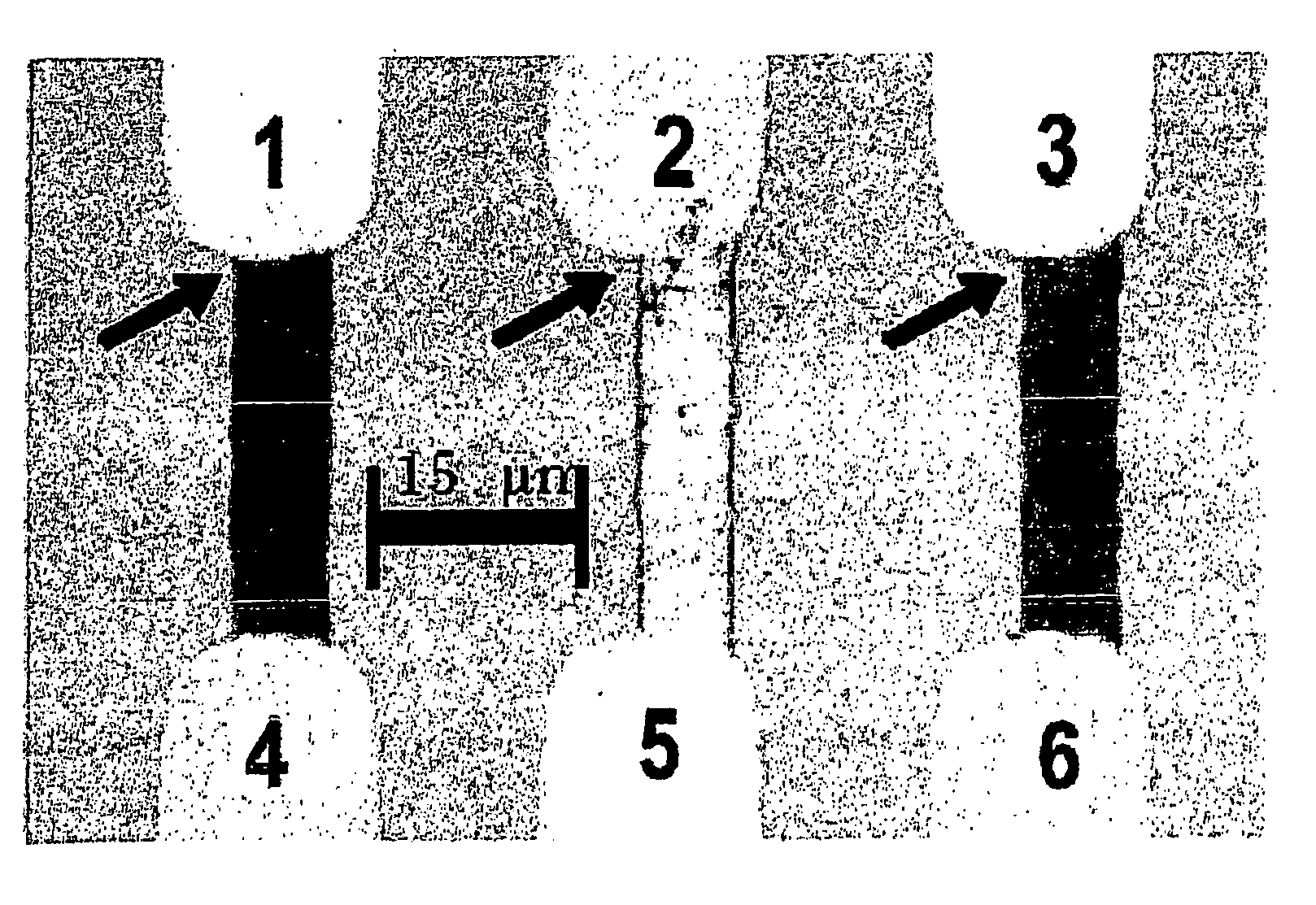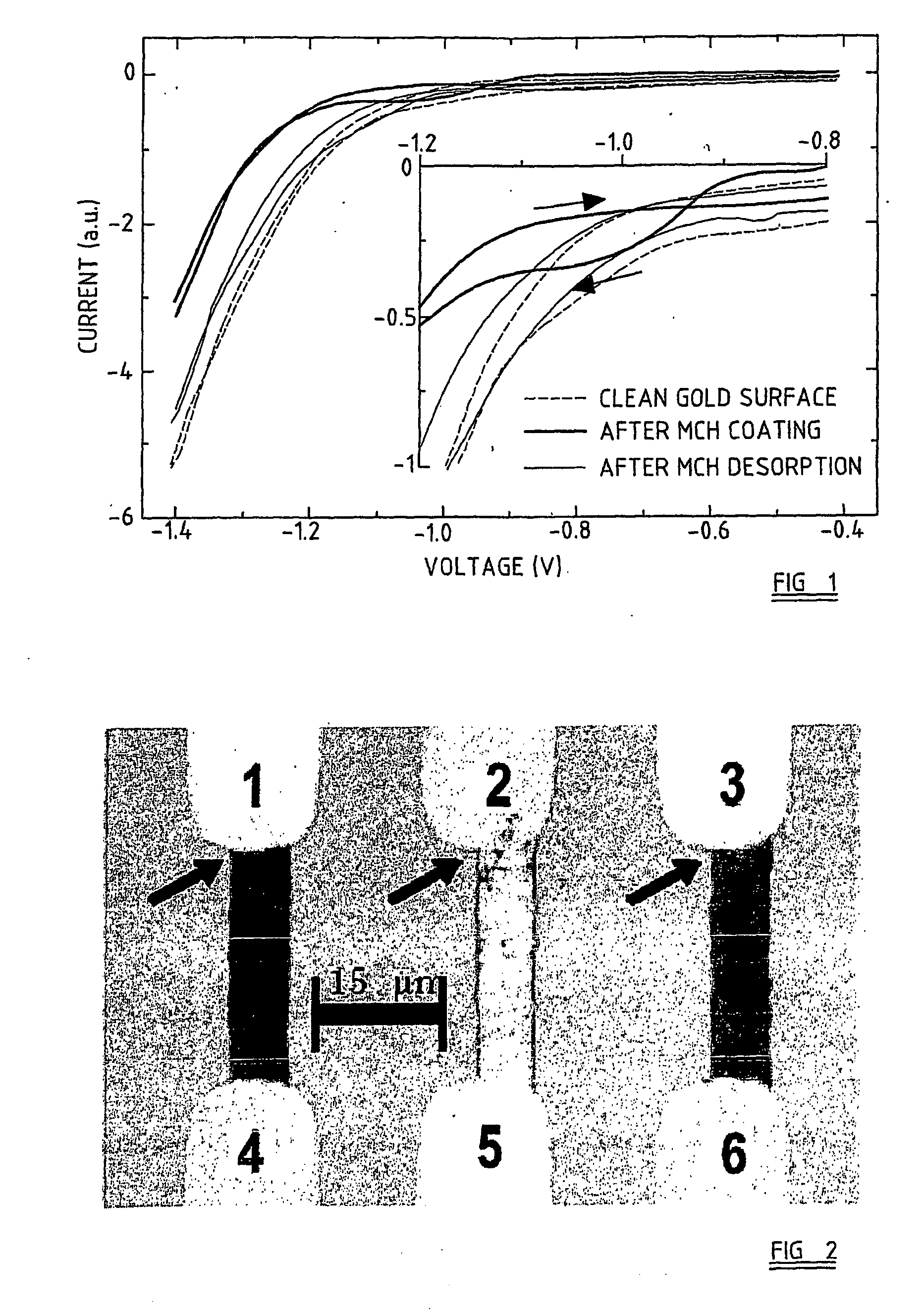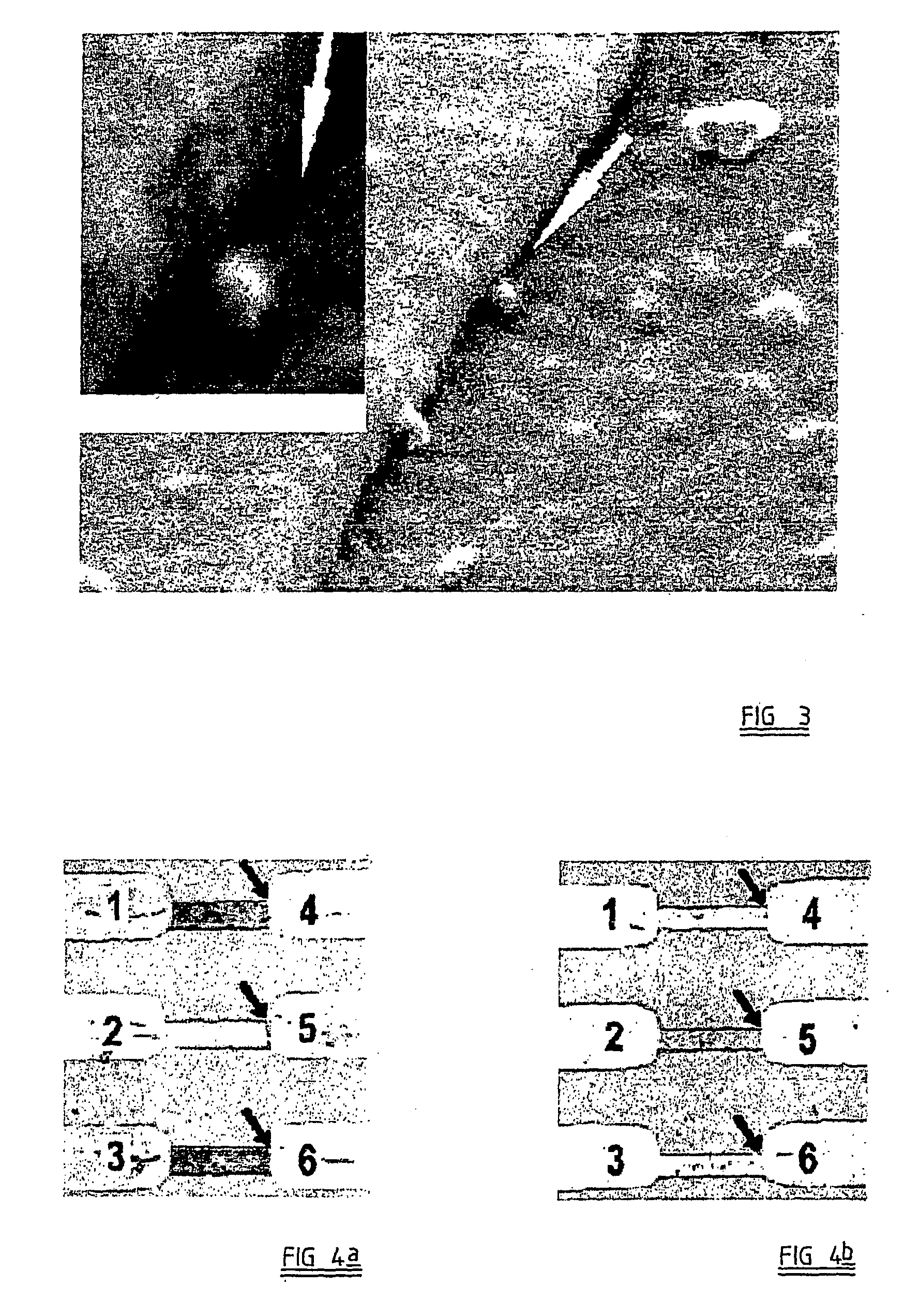Arrays of electrodes coated with molecules and their production
a technology of electrodes and molecules, applied in the direction of electrophoretic coatings, isotope separation, electrophoretic coatings, etc., can solve the problems of limiting the applicability of this procedure for nanoscale assembly, speed and the ability to coat different electrodes individually, and not meeting the requirements of resolution, speed and the ability to achieve spatial resolution, high purity, and reduced contamination
- Summary
- Abstract
- Description
- Claims
- Application Information
AI Technical Summary
Benefits of technology
Problems solved by technology
Method used
Image
Examples
examples
[0061] A series of opposing gold electrodes of sub-50 nm-separation was fabricated on a Si / SiO2 wafer using known UV lithography / lift off techniques as described below. The wafer was cleaned by washing in ‘piranha etch’ (30% H2O2, 70% H2SO4) for 1 hour, and then thoroughly rinsed in deionised water, ethanol, and again in deionised water. The entire electrode array was then coated with a protective molecular monolayer of 6-mercapto-1-hexanol (MCH) by immersing the wafer in a 1 mM aqueous solution of MCH for 60 min. FIG. 1 compares the CV trace of a coated electrode (solid line) with that of a clean electrode prior to coating (dashed line). A reductive desorption feature observed at around −1 V for the coated electrode indicates the removal of the MCH monolayer. All electrochemical measurements were performed in 100 mM phosphate buffer at pH 10 using a standard three electrode setup at a rate of 62 mV / s. A high purity platinum wire was used as the counter electrode. All electrochemica...
PUM
| Property | Measurement | Unit |
|---|---|---|
| Diameter | aaaaa | aaaaa |
| Length | aaaaa | aaaaa |
| Distance | aaaaa | aaaaa |
Abstract
Description
Claims
Application Information
 Login to View More
Login to View More - R&D
- Intellectual Property
- Life Sciences
- Materials
- Tech Scout
- Unparalleled Data Quality
- Higher Quality Content
- 60% Fewer Hallucinations
Browse by: Latest US Patents, China's latest patents, Technical Efficacy Thesaurus, Application Domain, Technology Topic, Popular Technical Reports.
© 2025 PatSnap. All rights reserved.Legal|Privacy policy|Modern Slavery Act Transparency Statement|Sitemap|About US| Contact US: help@patsnap.com



